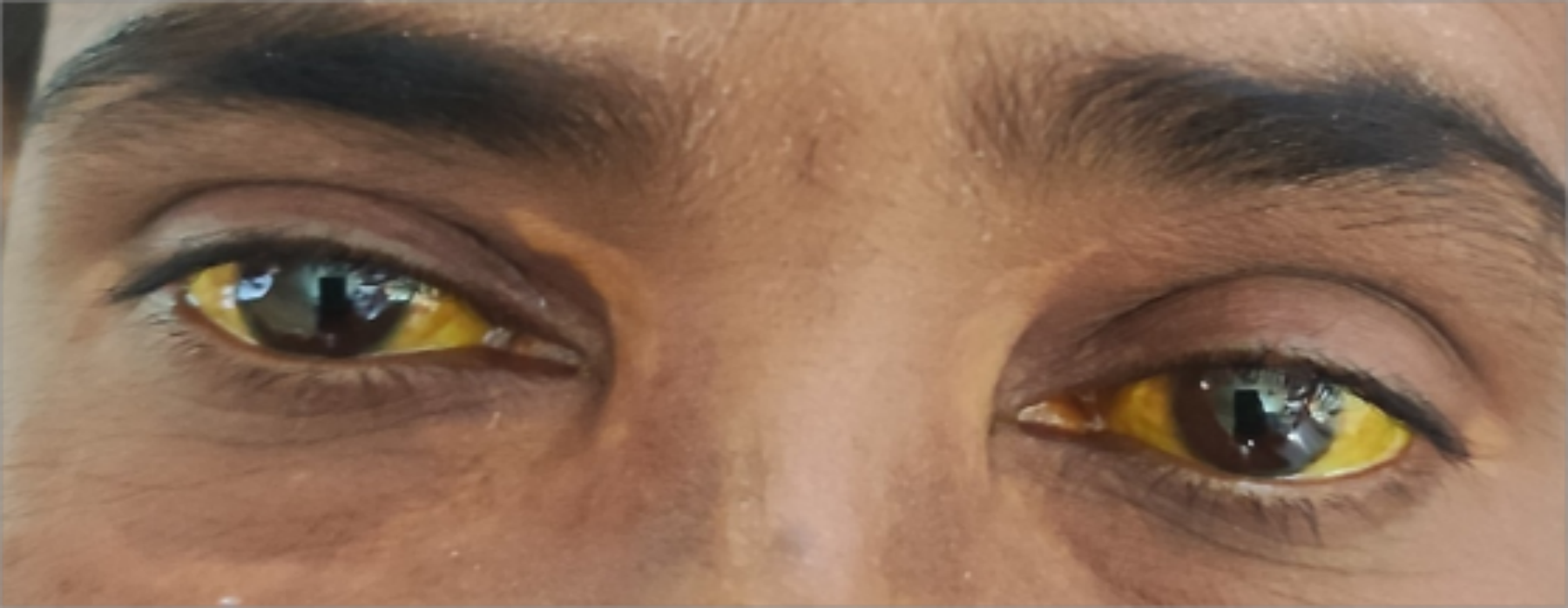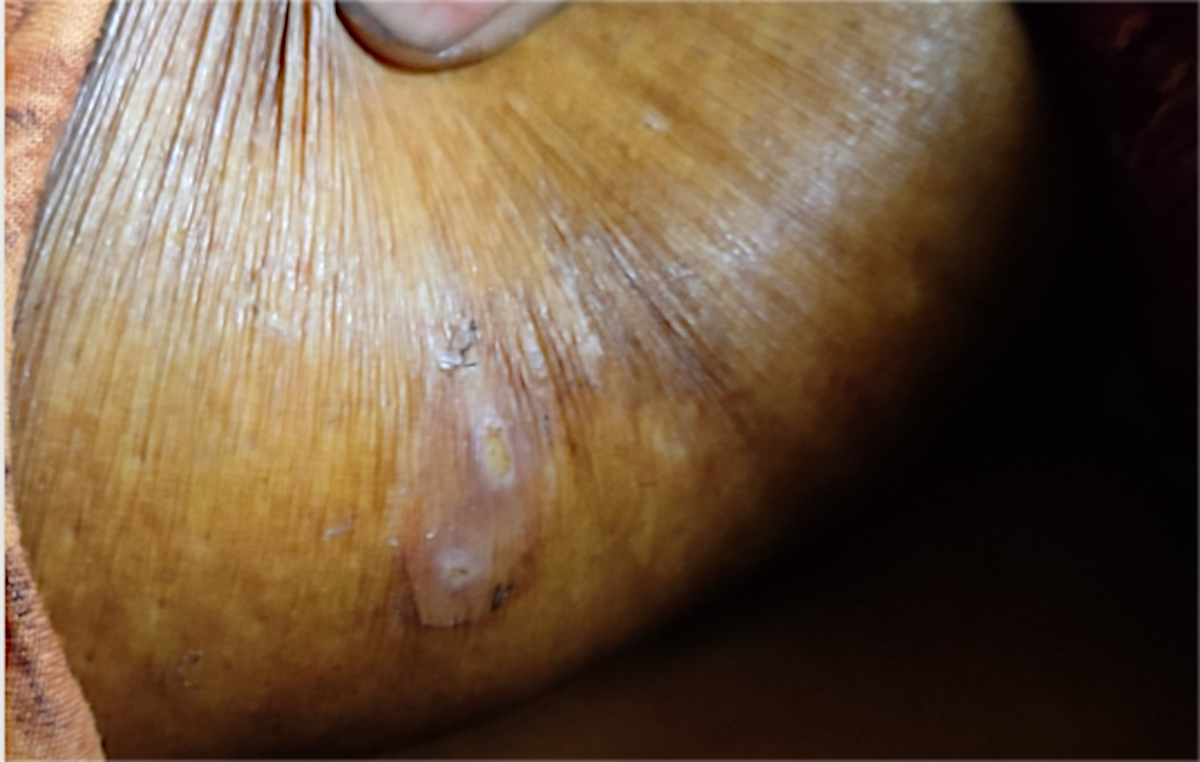Tuesday Poster Session
Category: Liver
P6011 - Bullous Pemphigoid Revealing AMA-Negative PBC-AIH Overlap Syndrome: A Multisystem Autoimmune Diagnosis Anchored by Histology
Tuesday, October 28, 2025
10:30 AM - 4:00 PM PDT
Location: Exhibit Hall

Prince Shah-Riar, MD (he/him/his)
DHR Health, Edinburg, Tx
Edinburg, TX
Presenting Author(s)
Tahmina Haque, MBBS1, Prince Shah-Riar, MD2, Ashiqur Rahman, MBBS3, Rafay Shahab Ansari, 4, Sardar Noman Qayyum, 5, Asif Zamir, MD, FACG6
1Fox Chase Cancer Center, Philadelphia, PA; 2DHR Health, Edinburg, Tx, McAllen, TX; 3Holy Family Red Crescent Medical College Hospital, Dhaka, Dhaka, Bangladesh; 4College of Medicine, Ziauddin University, Karachi, Sindh, Pakistan; 5Bacha Khan Medical College, Mardan, Islamabad, Pakistan; 6DHR Health Gastroenterology, Edinburg, TX
Introduction: AMA-negative overlap syndromes pose a diagnostic challenge in autoimmune liver disease, particularly when classical serologies are absent. Primary biliary cholangitis (PBC) and autoimmune hepatitis (AIH) may coexist despite seronegative profiles, necessitating histologic confirmation. This case demonstrates how a concurrent dermatologic autoimmune process—bullous pemphigoid—served as an early systemic clue.
Case Description/
Methods: A 45-year-old woman presented with progressive jaundice, fatigue, pruritus, and new-onset bullous skin lesions involving the chest, abdomen, and inner thighs. She denied joint pain, fever, or mucosal involvement. On examination, she had icterus, xanthelasma, healing bullae, and a BMI of 17.5 kg/m². Laboratory studies revealed microcytic anemia, cholestatic liver enzyme elevation, and hypoalbuminemia.
Autoimmune panel was notable for high-titer ANA, but negative AMA, ASMA, anti-LKM, anti-dsDNA, and anti-Smith antibodies. Abdominal ultrasound showed hepatomegaly and a contracted gallbladder. MRCP excluded biliary obstruction. Skin biopsy confirmed bullous pemphigoid. Liver biopsy demonstrated lymphocytic interface hepatitis with bile duct injury, consistent with PBC–AIH overlap as per Paris criteria. DEXA scan revealed severe osteoporosis (lumbar spine T-score –4.9), attributed to chronic cholestasis.
Discussion: This case exemplifies the need for histologic assessment when serologic data is inconclusive but clinical suspicion persists. AMA-negative PBC is well-documented, yet often underdiagnosed without biopsy. The coexistence of bullous pemphigoid highlighted the systemic nature of autoimmune activation. Severe skeletal involvement reinforced the chronicity of the liver disease and the need for metabolic surveillance in cholestatic conditions. In AMA-negative cholestatic liver disease, liver biopsy remains indispensable for establishing overlap syndromes. Dermatologic findings such as bullous pemphigoid may offer an early clue to systemic immune dysfunction. Integration of hepatic pathology, autoimmune markers, and dermatologic context is key to timely diagnosis and intervention.

Figure: Figure 1: Deep scleral icterus

Figure: Figure 2: Crusted lesion in the mammary fold, as an Extrahepatic Clue to Systemic Autoimmunity
Disclosures:
Tahmina Haque indicated no relevant financial relationships.
Prince Shah-Riar indicated no relevant financial relationships.
Ashiqur Rahman indicated no relevant financial relationships.
Rafay Shahab Ansari indicated no relevant financial relationships.
Sardar Noman Qayyum indicated no relevant financial relationships.
Asif Zamir indicated no relevant financial relationships.
Tahmina Haque, MBBS1, Prince Shah-Riar, MD2, Ashiqur Rahman, MBBS3, Rafay Shahab Ansari, 4, Sardar Noman Qayyum, 5, Asif Zamir, MD, FACG6. P6011 - Bullous Pemphigoid Revealing AMA-Negative PBC-AIH Overlap Syndrome: A Multisystem Autoimmune Diagnosis Anchored by Histology, ACG 2025 Annual Scientific Meeting Abstracts. Phoenix, AZ: American College of Gastroenterology.
1Fox Chase Cancer Center, Philadelphia, PA; 2DHR Health, Edinburg, Tx, McAllen, TX; 3Holy Family Red Crescent Medical College Hospital, Dhaka, Dhaka, Bangladesh; 4College of Medicine, Ziauddin University, Karachi, Sindh, Pakistan; 5Bacha Khan Medical College, Mardan, Islamabad, Pakistan; 6DHR Health Gastroenterology, Edinburg, TX
Introduction: AMA-negative overlap syndromes pose a diagnostic challenge in autoimmune liver disease, particularly when classical serologies are absent. Primary biliary cholangitis (PBC) and autoimmune hepatitis (AIH) may coexist despite seronegative profiles, necessitating histologic confirmation. This case demonstrates how a concurrent dermatologic autoimmune process—bullous pemphigoid—served as an early systemic clue.
Case Description/
Methods: A 45-year-old woman presented with progressive jaundice, fatigue, pruritus, and new-onset bullous skin lesions involving the chest, abdomen, and inner thighs. She denied joint pain, fever, or mucosal involvement. On examination, she had icterus, xanthelasma, healing bullae, and a BMI of 17.5 kg/m². Laboratory studies revealed microcytic anemia, cholestatic liver enzyme elevation, and hypoalbuminemia.
Autoimmune panel was notable for high-titer ANA, but negative AMA, ASMA, anti-LKM, anti-dsDNA, and anti-Smith antibodies. Abdominal ultrasound showed hepatomegaly and a contracted gallbladder. MRCP excluded biliary obstruction. Skin biopsy confirmed bullous pemphigoid. Liver biopsy demonstrated lymphocytic interface hepatitis with bile duct injury, consistent with PBC–AIH overlap as per Paris criteria. DEXA scan revealed severe osteoporosis (lumbar spine T-score –4.9), attributed to chronic cholestasis.
Discussion: This case exemplifies the need for histologic assessment when serologic data is inconclusive but clinical suspicion persists. AMA-negative PBC is well-documented, yet often underdiagnosed without biopsy. The coexistence of bullous pemphigoid highlighted the systemic nature of autoimmune activation. Severe skeletal involvement reinforced the chronicity of the liver disease and the need for metabolic surveillance in cholestatic conditions. In AMA-negative cholestatic liver disease, liver biopsy remains indispensable for establishing overlap syndromes. Dermatologic findings such as bullous pemphigoid may offer an early clue to systemic immune dysfunction. Integration of hepatic pathology, autoimmune markers, and dermatologic context is key to timely diagnosis and intervention.

Figure: Figure 1: Deep scleral icterus

Figure: Figure 2: Crusted lesion in the mammary fold, as an Extrahepatic Clue to Systemic Autoimmunity
Disclosures:
Tahmina Haque indicated no relevant financial relationships.
Prince Shah-Riar indicated no relevant financial relationships.
Ashiqur Rahman indicated no relevant financial relationships.
Rafay Shahab Ansari indicated no relevant financial relationships.
Sardar Noman Qayyum indicated no relevant financial relationships.
Asif Zamir indicated no relevant financial relationships.
Tahmina Haque, MBBS1, Prince Shah-Riar, MD2, Ashiqur Rahman, MBBS3, Rafay Shahab Ansari, 4, Sardar Noman Qayyum, 5, Asif Zamir, MD, FACG6. P6011 - Bullous Pemphigoid Revealing AMA-Negative PBC-AIH Overlap Syndrome: A Multisystem Autoimmune Diagnosis Anchored by Histology, ACG 2025 Annual Scientific Meeting Abstracts. Phoenix, AZ: American College of Gastroenterology.
